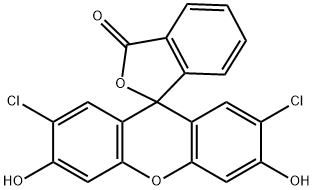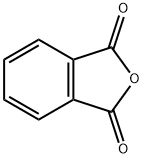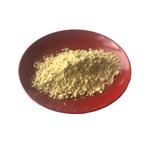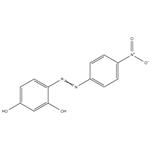Note
Hans et al. report that 2',7'-Dichlorofluorescein (DCF) finds legitimate experimental use in the generation of standard curves used to calibrate DCFH2-DA experimental results, post-chromatography estimation of carbohydrates and in indirect fluorimetric detection in open tubular capillary chromatography (OTC-HPLC). However, DCF is inappropriate for demonstrating ROS as it is oxidized to a non-fluorescent compound in the presence of hydroxyl radicles[1].
Chemical Properties
red to yellow solid
Uses
Widely used probe, e.g. for determination of carbohydrates by fluorescence densitometry after TLC and determination of H2O2 by chemiluminescence. Fluorescent additives used in indirect fluorimetric detection in OTC-HPLC.
Uses
2',7'-Dichlorofluorescein is used as an indicator and as a cellular antioxidant activity. It is also used for the determination of carbohydrates and hydrogen peroxide by fluorescence densitometry and chemiluminescence respectively. It is used as an indicator for argentometry by Fajans method. It is also involved in the cellular antioxidant activity assay. It is utilized as an additive in fluorescence and laser studies.
Definition
2',7'-dichlorofluorescein is a member of 2-benzofurans. It has a role as a fluorochrome. It derives from a fluorescin.
Application
2',7'-dichlorofluorescein has been used as an oxidation-sensitive fluorescent probe to measure ROS (reactive oxygen species) formation in cells.
Biological Activity
2',7'-dichlorofluorescein is an oxidation-sensitive fluorescent probe. 2′7′-dichlorofluorescein diacetate is oxidized to 2′7′-dichlorofluorescein in the presence of ROS (reactive oxygen species).
Biochem/physiol Actions
2′,7′-Dichlorofluorescein is an oxidation-sensitive fluorescent probe. 2′7′-dichlorofluorescein diacetate is oxidized to 2′7′-dichlorofluorescein in the presence of ROS (reactive oxygen species).
References
[1] Chander Hans. “2’,7’-Dichlorofluorescein (DCF) or 2’,7’-dichlorodihydrofluorescein diacetate (DCFH2-DA) to measure reactive oxygen species in erythrocytes.” Biomedicine & Pharmacotherapy (2021): 111512.






